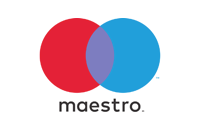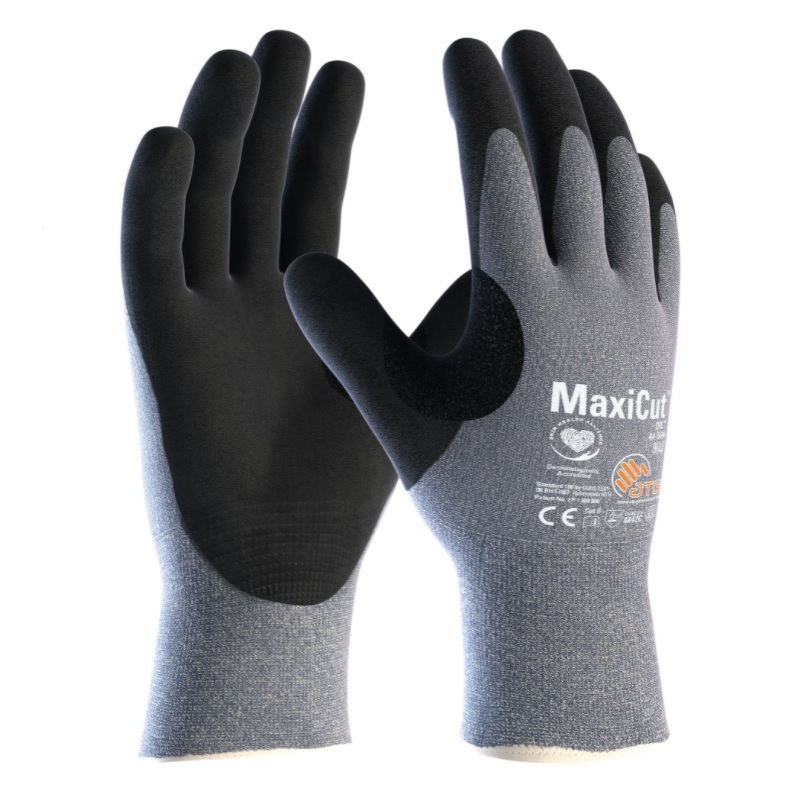ATG MaxiCut 44-504 CUTtech Cut-Resistant Safety Gloves
ATG MaxiCut 44-504 CUTtech Cut-Resistant Safety Gloves are designed and manufactured with ATG's patented industry-leading "CUTtech" fabric formula for handling sharp edges, timber, wood, metal and glass. They are supplied with a palm-only coating that allows the back of the glove to breathe and expel odour, sweat and perspiration naturally.
ATG MaxiCut 44-504 Safety Gloves are also incredibly resistant to oil, grease, moisture and dirt, meaning their foundation fabric wont degrade when it comes into contact with these damaging substrates in warehouses, workshops and on factory floors.
What's Included?
Key Features and Benefits
- Grease and oil resistant outer coating
- Nitrile coating enhances grip strength in greasy and oily conditions
- Level 4 abrasion resistance prevents breakdown of fabric in handling environments
- Part of the MaxiCut range designed to guard against cuts and other mechanical hazards
- Maximum resistance to tearing and abrasions
- Designed for use in contact with grease, oil, petrol and other slick substances
- Flexible and dexterous design makes for a lightweight pair of gloves
- Available in four different sizes for a guaranteed perfect fit
Which Size ATG 44-504 MaxiCut Grip Gloves Are Right for Me?
To find your perfect size, simply measure the circumference of your palm (ignoring the thumb area) and the length of your hand as indicated in the image below. Once you have your measurements, please consult the sizing chart below to find the correct size for your hand.

| Size | Palm Circumference | Hand Length |
| Size 7 (Small) | 178mm | 171mm |
| Size 8 (Medium) | 203mm | 182mm |
| Size 9 (Large) | 229mm | 192mm |
| Size 10 (Extra Large) | 254mm | 204mm |
Safety Standards for the MaxiCut 44-504 Cut-Resistant Gloves
EN 388: Mechanical Resistance
EN 388 is a European regulation governing the sale of gloves used for safety and protection. It determines the gloves' performance when used for protection against mechanical machinery by measuring the fabric's abrasion, cut, tear and puncture resistance.
The EN 388 cut resistance test uses a single sharp implement to repeatedly pressure a glove in order to determine the amount of force required to cause visible and functional damage.
| Standard | Resistance Rating |
| Abrasion Resistance | Level 4 |
| Cut Resistance | Level 4 |
| Tear Resistance | Level 4 |
| Puncture Resistance | Level 2 |
| ISO Cut Resistance | Level C |
Incredible Level 4 Abrasion Resistance
Abrasion resistance is often under-looked in terms of EN 388. MaxiCut OIl 44-504 Safety Gloves have been awarded the highest possible Level 4 rating. This indicates they can withstand a tonne of traffic, contact and wear without showing signs of breakage, degradation or splitting.
Level C Cut-Resistance Rating
Work gloves tested and specified as Level C are suitable for a wider range of uses, including areas where contact with blades and sharp edges is common. As these gloves are where dexterity starts to lessen, they're more suited for use with trade workers and in industrial settings like building and construction sites.
Suitable Applications and Environments for Use
To answer the question above, we have put together a list of professions and environments that we believe suit ATG MaxiCut 44-504 Safety Gloves perfectly. Please view the list below to take a look:
- Assembly
- Builders
- Cargo Handling
- Construction
- Glass Handling
- Machine Operation
- Maintenance
- Metalwork
- Roofing
- Scaffolding
- Timber Handling
- Warehouse
- Woodwork
DMF Chemical-Free Design
Dimethylformamide, or DMF for short is commonly used in the manufacturing of plastic and synthetic based gloves. Unfortunately, it regularly causes irritation and aggravation in users with skin conditions and irritation prone skin. ATG MaxiFlex Gloves are DMF-free, making them ideal for individuals with dermatological conditions.

Certified by OEKO-TEX, MaxiFlex Gloves are incredibly skin-friendly
What Are the Benefits of a Nitrile Coating?
Nitrile is an incredibly flexible coating that provides additional resistance to oil, fuel and chemicals. Nitrile is used as a protective coating in gloves because it matches the pliability of latex with the hazard and injury protection properties of a heavier, woven glove.
Double the Dip, Double the Protection
For ATG, a single coating is not enough. The first layer of nitrile serves to seal the glove, preventing moisture and liquid from penetrating through the glove fabric. The second layer works to enhance grip strength and stability, ensuring that material and products stay in place.
Discover More About MaxiCut
ATG's MaxiCut range features a selection of mechanically resistant safety gloves. Please view the video below to see what the technology used in this range can do to protect your hands at work:
Oil-Resistant Outer Coating
Every year, millions are lost on sites because of dropped material. Ensure that oil and grease don't compromise the strength and stability of your grip by using a pair of oil-safe work gloves. Their nitrile coating works tirelessly to absorb harmful and slick substances, keeping your hands dry and grippy for longer.
Reinforcement at Your Fingertips
Fed up your gloves tearing at the thumb? This recurring issue is a problem for tradesmen everywhere. ATG recognise this and manufacture their MaxiCut Gloves with a reinforced thumb crotch. This means when you make a fist, lift heavy material or flex your fingers, the vulnerable ridge area between the thumb and index finger flexes with you, guarding against rips and splitting.
Perfect Come Rain or Shine
Thanks to a micro-cup grip enhancement coating, MaxiCut Cut-Resistance Safety Gloves are able to maximise and optimise grip strength and stability no matter what conditions you're working with. This coating works to absorb tiny droplets of slick moisture that can compromise grip strength and stability if left to linger on the palm and fingers.
Additional Documentation







